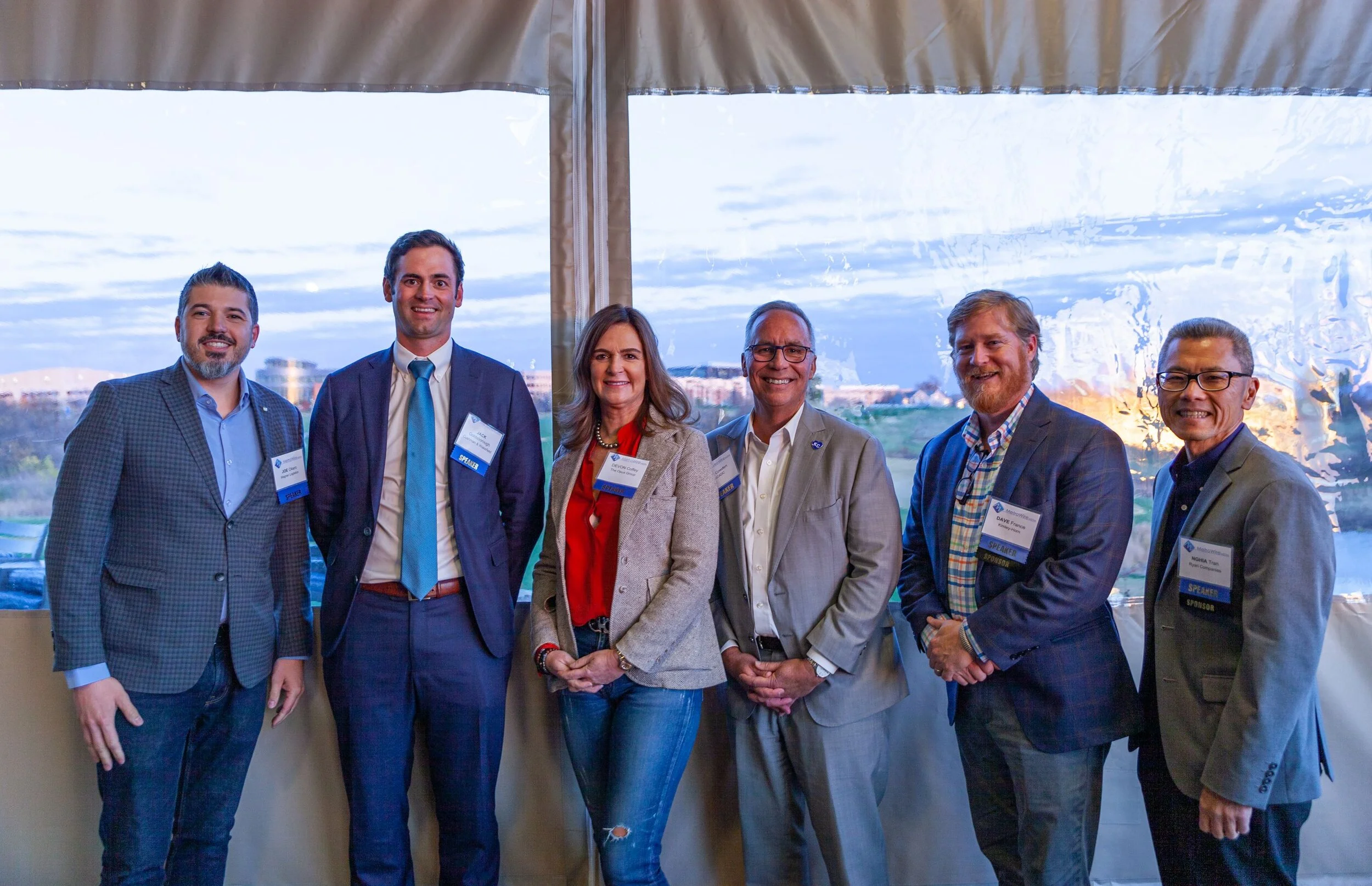MetroWire Media hosted its annual Industrial Summit on November 17 at Canyon Farm Golf Club, Silo Modern Farmhouse, drawing in another sold-out crowd of over 125 attendees.
Panelists Devon Coffey, senior manager, real estate development, at The Opus Group; Dave France, P.E., vice president at Kimley-Horn and Associates; Jack Goldsborough, CCIM, industrial real estate broker at Cushman & Wakefield; Joe Oliaro, vice president of sales and chief real estate officer at Wagner Logistics; and Nghia Tran, director of project development at Ryan Companies, joined moderator Tim Cowden, president and CEO at Kansas City Area Development Council to discuss the industrial market and related issues, including the supply chain and the strengths of the Kansas City area.
“The industrial market, as we all know . . . is on fire. And if we didn’t have the industrial market in Kansas City over the last couple of years, we would be in a world of hurt,” said Cowden, opening the discussion.
The industrial market has exploded in recent years; whereas, much of the concentration was focused in the Johnson County, Kansas submarket. Other submarkets are emerging, said Goldsborough, citing Wyandotte County, Kansas; south Kansas City, Missouri; and Liberty, Missouri. Between 2000 and 2019, Liberty saw 2 million SF of new industrial development, but in the last three years, there has been 3 million SF of new development, Goldsborough said.
Industrial developers are drawn to Kansas City from all over the country because the market is stable and provides a “nice, safe income stream,” said Coffey.
“The folks I’m speaking with, they still believe Kansas City is very underpriced in comparison to similar type markets. I think that active investors are looking to expand their territory and target markets that have more attractive pricing. And, Kansas City offers that. Our market seems to be the next rung on the ladder for the larger investors,” Coffey said.
The region is popular for the location of food and beverage manufacturing and distribution facilities. The food and beverage companies, which have been undergoing several mergers and acquisitions, have amassed large cash reserves and now are trying to spend it, said Tran. They also often are co-locating with their suppliers on a single campus.
“So their projects now have kind of grown beyond their current needs in terms of just manufacturing, so they are looking for a lot of space,” said Tran.
As the demand for more industrial space continues to surge, the developers are facing supply chain shortages. France said that flexibility is key. The shortages of certain materials like pipes, steel and roofing materials have had people looking at different proven materials that will perform similarly.
Food and beverage companies facing supply chain constraints to move perishable products or ingredients quickly are looking to rail. Because every major rail line passes through the Kansas City region, Tran said there is a lot of opportunities for food and beverage companies to solve this supply chain issue.
The panelists agreed that speed to market is driving deals.
“There’s so much demand for new, modern industrial space that oftentimes some of these occupiers are not so concerned with Liberty or Olathe, they just need space within Kansas City somewhere,” Goldsborough said.
The region has seen 35 million SF of new industrial development completed since 2012, said Goldsborough.
In just 2021, the Kansas City region has absorbed more than 7 million SF of new industrial space and is on pace for 15 million SF to come online, Cowden said.
“Just with our availability of space, coupled with Kansas City’s amazing highways and rail access and central location, it’s really become a slam dunk for a lot of these occupiers,” said Goldsborough.
E-commerce also is driving the demand for industrial space.
“Two years ago for every (one) billion dollar increase in online retail, it required 1.25 million SF of industrial space in the market. I don’t think that’s changed at all. In fact, I think it’s gotten higher,” Oliaro said.
“As crazy as it is to believe, Cushman & Wakefield in the last quarter reported that only 12.5% of total retail sales took place online. So based on that statistic, we have a lot of runway to go as people continue to buy more and more online as opposed to in-store,” said Goldsborough.
France said one weakness of the industrial market, both locally and nationally, is not having enough pipeline land ready to be developed.
“If I was going to focus on something in the market, I would be working on keeping out ahead of that far enough to make sure that you don’t run out of inventory so that we do have prospects. . . . I think that’s going to be a weakness across the board, across the country to be able to sustain the amount of growth that there still is in the market,” France said.
France said Kansas City has a great advantage over other markets because it is not land constrained by water, mountains or other impediments.
“That will help you win deals. You will expand because of that, for sure,” he said.

